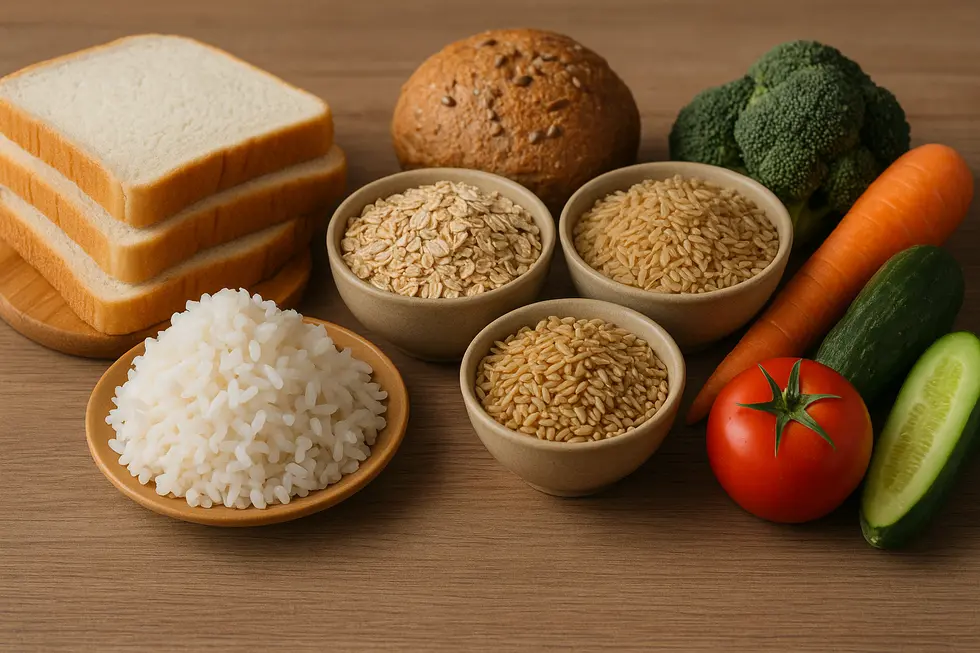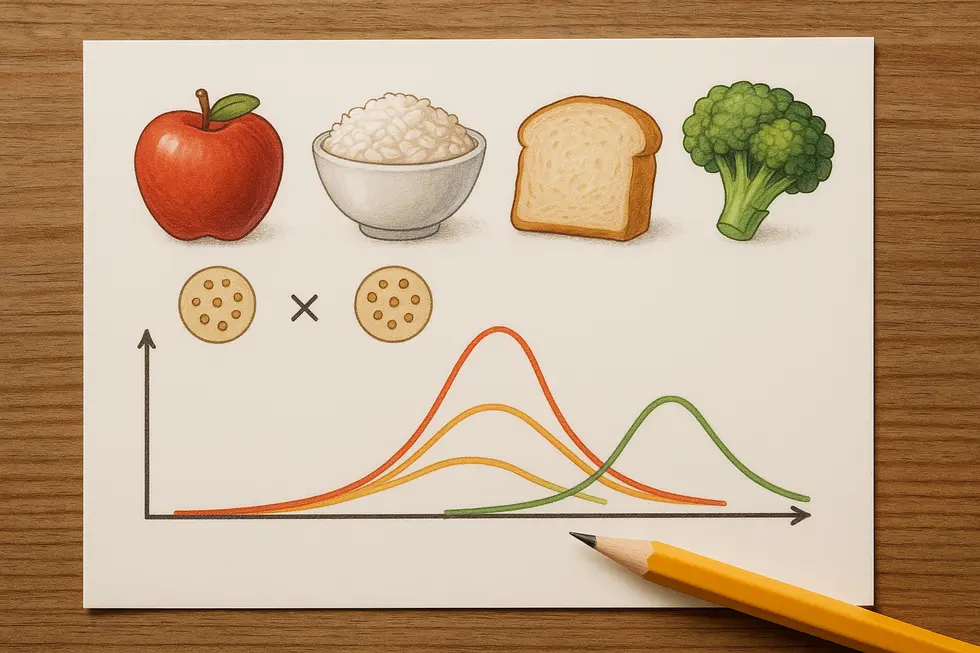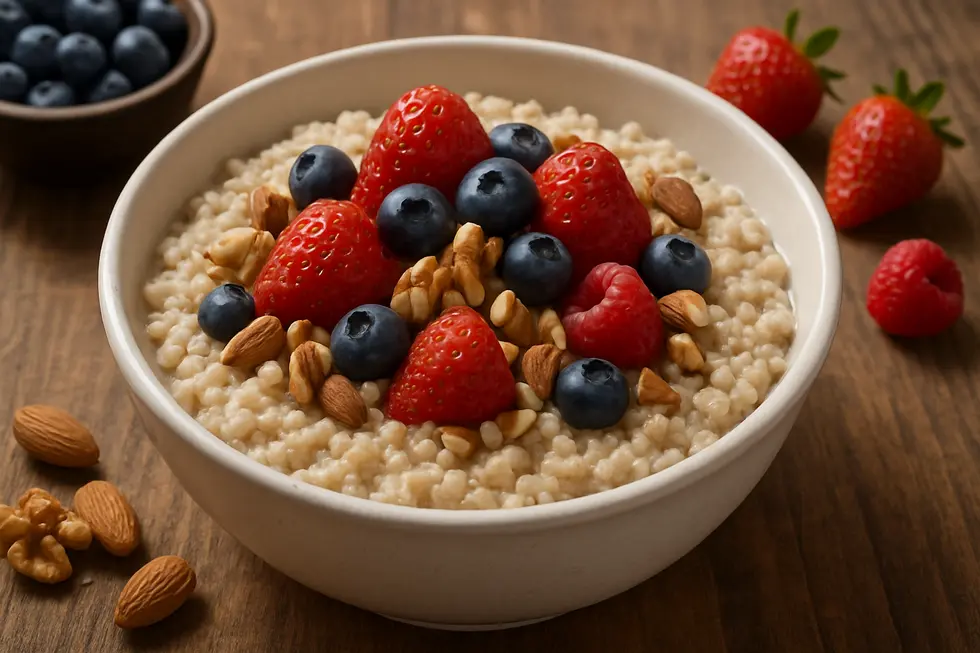Navigating the landscape of diabetes management requires a nuanced understanding of nutrition, especially the impact of carbohydrates on blood sugar levels. The glycemic index (GI) and glycemic load (GL) are pivotal tools that can empower individuals living with diabetes to make informed dietary decisions. By evaluating how foods affect blood glucose, these concepts offer pathways to mitigate risks associated with high blood sugar levels. In the ensuing chapters, we will delve into the role of the glycemic index in diabetes management and explore how the glycemic load complements this approach to provide comprehensive insights into managing diabetes effectively.
The Glycemic Index: A Pillar in Diabetes Management

The glycemic index (GI) is a pivotal tool in the management of diabetes, offering valuable insights into how various foods can impact blood sugar levels. As a numerical scale ranging from 0 to 100, with 100 being equated to pure glucose, it classifies carbohydrate-containing foods based on the rate at which they elevate blood glucose levels. High-GI foods, such as white bread and sugary beverages, lead to rapid spikes in blood sugar, while low-GI foods like beans and non-starchy vegetables cause more gradual increases, fostering better blood sugar stability. For individuals managing diabetes, understanding and applying the insights from the glycemic index is essential for creating a balanced dietary strategy that minimizes the risk of hyperglycemia and its associated complications.
Incorporating low-GI foods into daily meals can significantly benefit individuals with diabetes. These foods lead to a slower absorption of glucose, which helps maintain consistent energy levels, reduces hunger pangs, and prevents the roller coaster of sugar highs and crashes. Research has consistently shown that diets focusing on low-GI and low-glycemic load (GL) foods can produce meaningful improvements in glycemic control. This dietary approach not only stabilizes blood sugar levels over time but also mitigates common diabetes-related risks such as cardiovascular diseases.
The application of the glycemic index extends beyond simply avoiding high-GI foods. It involves integrating a balanced assortment of low-GI foods into one’s diet plan. These foods—including lentils, most fruits, and non-starchy vegetables—are typically high in fiber, which plays a crucial role in slowing down digestion and sugar absorption. By combining high-fiber foods with those that have lower carbohydrate content, individuals with diabetes can formulate meals that not only fit their dietary needs but also promote overall health.
Moreover, the concept of glycemic load (GL) refines the understanding of how foods affect blood sugar levels by considering the quantity of carbohydrates in a serving. The glycemic load offers a more comprehensive perspective by calculating the actual impact on blood sugar based on both the type and the amount of carbohydrates consumed. The formula for GL is:
[ \text{GL} = \frac{\text{Carbohydrate content in grams} \times \text{GI}}{100} ]
This calculation can guide individuals in making informed decisions about portion sizes and selecting food combinations that are optimized for maintaining steady glucose levels. By emphasizing the importance of GL, people with diabetes can tailor their dietary practices to accommodate portion control, enabling them to enjoy a variety of foods without compromising their glycemic stability.
While managing diabetes through the glycemic index and load, people often seek alternative sweeteners to align with their dietary objectives. Natural sweeteners such as agave, stevia, and monk fruit are prized for their low GI values, making them attractive substitutions for traditional sugars. Despite their benefits, it is crucial to evaluate each sweetener’s overall health impacts, as some may pose unintended health risks.
To further aid in understanding and utilizing low-GI foods, resources like the low-glycemic fruits and diabetes guide provide detailed insights into specific food choices that are favorable for blood sugar management. This includes a diverse range of fruits such as cherries and apples, which offer natural sweetness with reduced glycemic impact, assisting in maintaining a balanced diet that includes variety while supporting effective diabetes management.
In conclusion, the glycemic index serves as an instrumental framework for making nutritional decisions that benefit individuals with diabetes. By selecting foods with a lower GI or a calculated glycemic load, individuals can significantly enhance their ability to manage their blood sugar levels, reducing the likelihood of complications associated with diabetes. Understanding these concepts is not just about restricting certain foods, but about cultivating a more varied and enjoyable diet that promotes long-term health and wellness.
Harnessing Glycemic Load: A Deeper Dive into Diabetes Management

Understanding the glycemic load (GL) plays a pivotal role in diabetes care, offering a more comprehensive perspective when juxtaposed with the glycemic index (GI). While the glycemic index ranks foods based on their potential to elevate blood sugar levels relative to pure glucose, it sometimes overlooks a crucial aspect: the actual quantity of carbohydrates in a typical serving of food. This can potentially lead individuals with diabetes to draw misleading conclusions about their diet’s impact on blood sugar management.
Here, the concept of glycemic load becomes exceptionally relevant. By considering both the GI and the amount of carbohydrates present in a portion, GL gives a fuller picture of a food’s glycemic impact. The calculation is straightforward yet profound in its implications: GL is derived by multiplying the carbohydrate content of the serving by the GI and then dividing by 100. This dual consideration of carbohydrate quality and quantity allows GL to gauge the effect of single foods, mixed meals, or entire diets on blood sugar levels with a nuanced understanding.
Take watermelon, for example. Despite having a high GI, watermelon is predominantly water and low in carbohydrates per typical serving. Consequently, its GL is low, indicating less potential for rapid blood sugar spikes. This illustrates a crucial point: although some foods might be categorized as high-GI, their low GL due to small carbohydrate content per serving makes them less problematic for maintaining stable blood glucose levels.
For those managing diabetes, focusing only on GI can be insufficient because it fails to address portion sizes and total carbohydrate intake. This is where GL offers significant value, helping individuals effectively estimate the overall glycemic impact of realistic portions and meals. While research presents mixed views about the efficacy of choosing foods solely based on GI for long-term glucose control, the addition of GL to dietary planning adds a layer of precision, facilitating personalized nutrition strategies.
Moreover, focusing on glycemic load is aligned with contemporary dietary recommendations that emphasize evaluating entire meals rather than individual ingredients. This perspective better replicates everyday eating habits and aids people with diabetes in making choices that stabilize postprandial blood glucose levels, a critical aspect of long-term diabetes management.
The combined use of GI and GL in dietary considerations not only provides a more rounded view but also supports better metabolic outcomes. This approach helps in stabilizing energy release throughout the day, minimizing the risk of energy crashes that often accompany high-GI food consumption. In practice, incorporating GL into dietary planning helps individuals fine-tune their carb intake, balancing their meals to avoid dramatic fluctuations in their blood sugar levels.
For further exploration of how these concepts can be integrated into a practical nutritional plan, the University of Georgia Extension provides excellent resources on the calculations and applications of glycemic index and glycemic load in diabetes care. Learn more about Glycemic Index and Glycemic Load calculations and their applications in diabetes care.
In conclusion, adopting a diet informed by both GI and GL can offer substantial benefits for individuals with diabetes, aiding in better blood sugar control and metabolic health. Recognizing the value of glycemic load, alongside the glycemic index, allows for a diet that mirrors realistic consumption patterns and promotes holistic well-being. This integrated approach empowers individuals with diabetes to manage their condition more effectively, ensuring dietary choices that support a balanced lifestyle.
Final thoughts
Understanding and applying the principles of the glycemic index and glycemic load can significantly enhance diabetes care by helping individuals maintain stable blood sugar levels. By focusing on low-GI and appropriate GL foods, patients can mitigate risks associated with hyperglycemia and optimize their dietary choices. Embracing these tools is a step toward proactively managing diabetes and fostering overall well-being.
Don’t just read about better health—live it. Download the Glycemic Index Guide Tracker today to start making smarter food choices, track your glucose, and stay on top of your nutrition—all in one app.
About us
Glycemic Index Guide Tracker is a powerful yet easy-to-use mobile app designed to help you make informed dietary choices by tracking the glycemic index (GI) and glycemic load (GL) of the foods you eat. Whether you’re managing diabetes, following a low-carb or keto diet, or simply aiming to maintain steady energy and better health, the app offers a comprehensive food database, nutrition and glucose tracking tools, weight monitoring, and curated low-GI recipes—all in one intuitive interface. It’s your go-to companion for understanding how different foods affect your blood sugar and for building smarter eating habits.


Leave a Reply